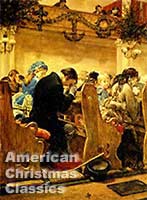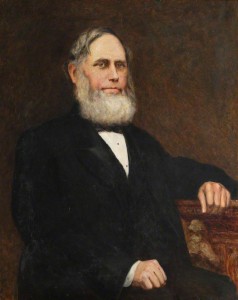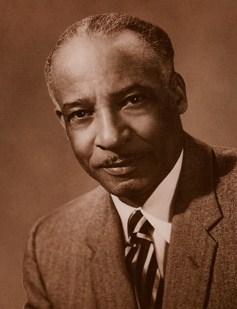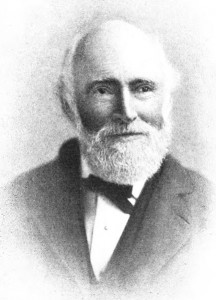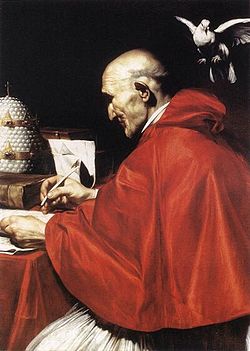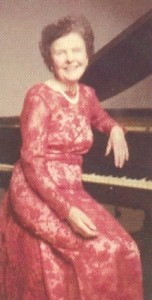Christmas Songs and Carols to Brighten the Holidays
Let us make this “a season to be jolly!” Despite our troubles, let us rekindle the fond memories of Christmas past for our parents, grandparents, and children. Let us touch the sentimental strings of carefree and youthful days that once consumed Baby Boomers and our military veterans.
Let us start with the idea of organizing some of our holiday festivities around the theme of singing carols and holiday songs. It doesn’t get better than hearing joyous Christmas songs while hauling in and trimming the Christmas tree.
Some familiar old-timers reminisce about the joy of Christmas songs and carols.
The late Andy Williams, a popular singer of the 1960s and 1970s, described celebrating the Christmas season in an interview with me several years ago. “It was such a great time,” Andy said, as he and his three older brothers used to go house to house singing carols and drinking eggnog in Wall Lake, Iowa.
“Those were the days when you knocked on a neighbor’s door and opened unlocked doors.” The talented singer who in later years starred at his Moon River Theater in Branson, Missouri, suggested it would be a nice thing to renew the tradition of caroling around the neighborhood, or one’s home town, “because it is such a wonderful thing to do.”
Della Reese, familiar to television viewers for her earthly role in the popular 1994-2003 program “Touched by an Angel,” wrote to me at the same time “I just love the way Christmas carols change the spirit and attitudes of us all.” An accomplished singer and ordained minister, in addition to her acting skills, she described “Silent Night” as a magnificent thought, and her favorite holiday tune as “Chestnuts Roasting on an Open Fire” sung by the mellifluous Nat “King” Cole. The irrepressible Della added, “In fact, I don’t really start my Christmas in earnest until I hear Nat sing “The Christmas Song.”
The late country and pop singer, Gene Pitney, enjoyed considerable success on both sides of the Atlantic through the mid-1960s with more than twenty Top 40 singles, including hits “Town Without Pity” and “Only Love Can Break a Heart.” In an e-mail Gene fondly recalled carving the turkey when his large family gathered for the holidays and the singing of Christmas carols. “I prefer religious carols,” he said, “that have not become jaded by commercial overuse. They represent the essential Christmas message.”
Take a cue from Andy, Della, and Gene. Start this holiday season with the idea of organizing your festivities around the theme of singing carols and holiday songs.
Celebrate with friends and family at home beside the fireplace or piano, or while trimming the Christmas tree, with traditional classics as “O Little Town of Bethlehem,” or “The Twelve Days of Christmas,” or singing such nostalgic holiday fare as “White Christmas,” “Have Yourself a Merry Little Christmas,” or “Rudolph the Red-Nosed Reindeer.”
Encourage friends to join in the singing of “Silent Night” and “We Wish You a Merry Christmas” in front of your neighbors’ city stoop or country home. Better yet, why not sing for our senior citizens at nursing home or an assisted care facilities, or at a food kitchen for the poor and homeless, or a military hospital for our aged veterans or wounded warriors? Rest assured your caroling there will be met with open hearts and ready smiles.
Or you might volunteer to take part in the local performance of Handel’s “Messiah” for other worthy causes, or support a local church by attending its vesper service where awe-inspiring Christmas motets and concertos may reverberate, and where the reverential carol-hymn “O Come, O Come, Emmanuel” soars to celestial heights on the wings of angels. This is truly music for the soul.
Though the custom of singing Christmas songs and carols in front of neighborhood homes may seem quaint and outdated, let us redouble our efforts, especially this year, to engage young and old alike in reviving a wonderful Christmas tradition that is never out of fashion.
Ron Clancy is a Christmas songs and carols historian, and the author of illustrated Christmas music gift collections at www.christmasclassics.com.
Christmas Eve 2013: Gratitude and Fisher House
Today is Christmas Eve, a much anticipated day on the Christian calendar that serves as a prelude to the birth of our savior Jesus Christ. For many of us it a day of evening worship at our parish church and a time to reflect on the meaningful story of Christmas so richly illuminated by the Gospel of St. Luke.
For me personally Christmas Eve floods me with childhood memories about going to midnight Mass and hearing a choir of nuns sing carols so beautifully that their notes seemed to spiral heavenward as though on the wings of angels. That warm and intoxicating experience has often been rekindled each Christmas Eve, especially today when I took time from doing last minute Christmas shopping to re-read several e-mails I recently received from Fisher House managers from across the country regarding the donations of Best-Loved Christmas Carols and American Christmas Classics, my two best-selling, highly illustrated Christmas music collections
Two of those e-mails were particularly poignant. Heather Frantz from the Fisher House of Pittsburgh wrote: I just wanted to let you know that we handed out your boxed collections to our guests this past Wednesday at our Christmas Party and they absolutely LOVED them!!!!!! We had several wives who were so touched by the gift that they teared up and they all opened them and couldn’t believe how amazing the book was and all of the stories and history behind the songs that they all love so much. Thank you so very much for providing such a joyous gift for our guests!!! Merry Christmas to you!
The second response came from Kristin Palmer, Fisher House of San Diego. I just wanted to follow up with you and let you know we received and have been distributing your Christmas collections to our families. I can tell you personally each family I have talked to is touched and awed by your generosity. The holiday season on a good day can be stressful enough, but to have to also deal with a loved one in a medical crisis compounds that stress. I gave the CDs to a mother whose 18 year old Marine is receiving cancer treatments. She was very moved, and thankful. Fortunately in her case she will be able to bring her son home for the holidays, and she said they would be listening to them and letting everyone they know about the generosity of the Fisher House and those that support it. For the rest of the families that will have to remain here for the holidays, at least they will have a little Christmas spirit and know someone was thinking of them during the holidays. Again, thank you and God bless!
The sentiments conveyed by Fisher House military families are similar to the feelings I had when the Knights of Columbus, SKF Industries, Villanova University students, and others annually feted us at St. John’s Orphanage in Philadelphia during the Christmas holidays. I fondly remember, along with hundreds of other orphan boys, the warm afterglow of being a starry-eyed recipient of carefully wrapped Christmas presents that were more precious than gold.
To hear that the joy of my Christmas days of yore has been replicated and found expression in the hearts of Fisher House military families truly humbles me. As it should for one who has benefited much from the Christmas spirit.
Merry Christmas!
Christmas Classics PERSON OF THE DAY: John Troutback
On this day in 1832, John Troutback was born in Blencowe, Cumberland, England. He was a noted English translator of famous musical texts and an Anglican priest who served as chaplain to Queen Victoria during his tenure as Minor Canon at Westminster Abbey (1869-1899). The Rev. Troutback had previously held the position of Precentor at Manchester Cathedral from 1865-1869.
For purposes of distinction in the Anglican Church, a Minor Canon is usually a junior clergy staff member of a cathedral or collegiate church who participates in daily services. A Precentor, too, is a clergy member, generally part of a large church, whose charge is to prepare and organize liturgy and worship services.
The Rev. Troutback arranged many of the royal services at Westminster Abbey, most notably the 1887 Golden Jubilee service for Queen Victoria. In addition to devoting much of his life’s energy to church music, including editing Westminster Abbey Hymn Book (1883), several chant books, and The Manchester Psalter a few years prior to his assignment to Westminster Abbey. A possessor of a very fine voice, he was also the author of Church Choir Training.
Troutback’s greatest claim to fame, however, was his English translations of German, French, and Italian operas, songs, and oratorios for the British music publisher Novello. The Who’s Who List of his translations included Johann Sebastian Bach’s St. Matthew Passion, St. John Passion, Magnificat, and Christmas Oratorio.
The Christmas Oratorio (German Weihnachts-Oratorium) by Bach was one of three oratorios written near the end of his career and his last major contribution to the Lutheran Church. It was intended to conform to the church calendar for the 1734 Christmas season and to be performed on six successive Sundays during Advent and the Christmas season at two churches – St. Thomas and St. Nicholas in Leipzig. The oratorio incorporated six cantatas from earlier Bach compositions, some of them secular in tone, which caused some Lutheran Church elders to have problems with the great composer’s discarding of some hymn texts in favor of poetical passages and the interjection of a number of chorales, choruses, and arias of a non-Scriptural nature into the sacred work. The oratorio’s recitative and chorale settings, however, were original Bach compositions.
Bach received inspiration for his work from both the St. Luke and St. Matthew versions of the Nativity, especially since together they gave a more complete narrative of Christ’s birth. He believed the St. Luke 2:1-21 gospel had greater poetic qualities than the gospel of St. Matthew 2:1-12. However, St. Matthew’s story was particularly attractive to Bach since it recounted the tale of the Three Wise Men, leading Bach to attach greater significance to the Magi in the concluding passages of the oratorio.
The finished oratorio was broken into six parts, each to be performed on one of the major feast days of the Christmas period as follows:
Part I: The Birth of Jesus (Christmas Day)
Part II: The Annunciation to the Shepherds (December 26)
Part III: The Adoration of the Shepherd (December 27)
Part IV: The Circumcision and Naming of Jesus (New Year’s Day)
Part V: The Journey of the Magi (First Sunday after New Year)
Part V: The Adoration of the Magi (Epiphany – January 6).
Despite its original three hour length, the Rev. Troutback must have been elated to take on the task of translating Bach’s marvelous Christmas opus. In 1874 Novello published it along with Rev. Troutback’s English translation of Bach’s Magnificat.
For his distinguished service to his church, the Rev. Troutback in now buried with his wife in the East Cloister of the Westminster Abbey.
Christmas Classics PERSON OF THE DAY: William L. Dawson
On this day in 1898, William Levi Dawson was born in Anniston, Alabama. He was an acclaimed African-American composer, conductor, and trombonist who wrote a wonderful arrangement of the Christmas spiritual Mary Had a Baby, a carol with two distinct lyrical texts. In some circles Dawson was called the “father of the Negro spiritual” although such a sobriquet might be contested by the John Works family also noted for its scholarship of Negro folk music.
Dawson was determined to earn a music education. Although black students were prohibited from attending classes, several professors helped him to clandestinely pursued his bachelor degree at night from the Horner Institute of Fine Arts in Kansas City. By day he taught at the city’s Lincoln High School. His formal studies continued at the Chicago Musical College and the American Conservatory of Music, the latter from which he earned his master degree. He also enjoyed a career as a trombonist for both the Civic Orchestra of Chicago and Redpath Chautauqua, a campground assembly that usually gathered during the summer for music events or literary, moral, and scientific lectures.
The composer’s career, however, was primarily devoted to teaching at the college level. In 1931 he went to teach at Tuskegee University in Alabama where he soon himself the founding chairperson of its School of Music. During his tenure at Tuskegee, ending in 1956, Dawson achieved greatness as a composer. His body of work included arrangements and variations of spirituals, including his popular Ezekiel Saw the Wheel, King Jesus is a-Listening, and Jesus Walked the Lonesome Valley, and other spirituals that are widely published and regularly performed by school and community choral programs. In the classical realm, he is best known for Negro Folk Symphony, reputedly the first of its kind by a black composer, which premiered in 1934 with the Philadelphia Orchestra under the direction of the dynamic Leopold Stokowski.
The lyrical text of Mary Had a Baby may date from the 18th century when it was probably sung at religious revival camp meetings where a “call and response” technique was utilized to unify the congregation in worship. After the Civil War, this musical style became more prevalent in black churches, especially those of the rural South, whose members learned it from their ancestors, almost all of whom were slaves.
As with most of his arrangements, Dawson employed black folk song idioms to Mary Had a Baby, an important addition to AMERICAN CHRISTMAS CLASSICS . Inspired by the spiritual text, he creates a heightened sense of dignity, despite the humble manger setting, of Mary the mother giving birth to her baby who is richly exalted as “King Jesus.”
Christmas Classics PERSON OF THE DAY: John Sullivan Dwight
On this date in 1893, John Sullivan Dwight died in Boston. He was one of the more compelling figures from Harvard University who were Christmas carol composers or translators. They included among others, Edmund Hamilton Sears (It Came upon the Midnight Clear), Henry Wadsworth Longfellow (I Heard the Bells on Christmas Day), and Rev. Phillips Brooks (O Little Town of Bethlehem). Dwight’s contribution was providing the English translation for O Holy Night after the French carol Cantique de Noël.
After graduating from Harvard Divinity School, John Sullivan Dwight served as a Unitarian minister in Northampton, Massachusetts. But his stay there was short-lived. He had to leave the ministry because he became deathly ill when he had to deliver sermons to his congregation. After leaving the ministry he became a recluse and then sojourned to the socialistic Brook Farm community, of which he was one of its founders. For five years there he lived a transcendental life teaching classical languages and music. Life on the commune also meant time for farming, cutting wood, cultivating trees, and other chores.
Eventually he returned to Boston and devoted himself to literature where he became America’s first influential classical music critic writing for Dwight’s Journal of Music. For several years it was the only musical journal in the country.
Dwight also cultivated an interest in European carol tunes, particularly the French carol Cantique de Noël (a.k.a. Minuit Chrétiens). A carol with an intriguing history, it became much disliked by French church authorities even though it had originally been well received by them and the church faithful. This turnabout led to criticism about the carol’s perceived lack of musical taste and because it did not possess the “spirit of religion.” But the repudiation of the carol may have been due to Placide Cappeau, the carol lyricist, and his socialist leanings and later renunciation of Christianity; not to mention the fact that Adolphe Adam, the composer of the carol melody, was Jewish.
Thirteen years after Dwight’s death the carol had the distinction of being the first ever heard on the radio. On Christmas Eve in 1906 ships at sea heard O Holy Night being played on a violin.
- John Sullivan Dwight
Christmas Classics PERSON OF THE DAY: Pope Gregory the Great
Today is the Feast Day of Pope Gregory I, or Saint Gregory the Great (590-604 A.D.). He was born in a wealthy Patrician family, chose a solitary monastic life as a Benedictine monk after finding personal discontent as a public official, and then ultimately was elected as pope, the first monk to be elevated as pontiff. He is buried in St. Peter’s Basilica, Rome.
Gregory the Great was an important figure in the world of Western Music, one heavily influenced by church liturgy. His monastic life had brought him close to that music, providing him with the knowledge that it was highly unorganized. Although he bemoaned his elevation as pope, preferring instead the world of monastic piety and contemplation, Gregory took on the monumental task to codify and bring a sense of order to the literally thousands of church liturgical texts, most of them written in Latin.
Gregorian chant, i.e., Western chant or plainchant, was named after him because of his papal efforts to organize these large stores of church music. There is no definitive proof, however, that Gregorian chant stems from the late sixth century or at any time during Gregory’s fourteen-year rule as pope. The earliest manuscript found containing Gregorian chant dates from the ninth century and comes from the Frankish Empire.
What is not subject to question is Gregory’s desire to bring order and conformity to Church liturgy from the vast stores of sacred texts. His strong interest in music was supposedly demonstrated by his active collection of a rather large repertory of Roman chants, which may have numbered three thousand pieces at the time, and at his papal behest Roman chant would eventually spread throughout the continent and supersede all other chants in usage. Also, at his behest, monastic groups were formed to serve basilicas, the ancient churches of Rome accorded special ceremonial rites by the pope. These groups formulated chant based on verses from Psalms of the Old Testament, but there is no musical evidence to verify these chants as being Gregorian. One reason for this lack of evidence was that notation was still unknown.
One of the most important developments in the history of Western music, influenced by the ancient Greeks, who had practiced naming different music pitches with letters a thousand years earlier, notation evolved as a mnemonic device for singers who were already familiar with melody and words.
Notation quickly enhanced the growth of Gregorian chant, which by the eighth century was in competition with, or descendant of, other chants from the ancient Church, including Ambrosian, from the early Christian Church and named after St. Ambrose, the bishop of Milan; Mozarabic, from Spanish rites; Gallican, from ancient Gaul (France); Byzantine, from the Eastern Church; and Old Roman, from the earliest days of empire. There were other chants, of course, that existed then, as they have throughout all history, which served the impulses of primitive sects besides the more established religions of Eastern and Western societies.
By the ninth century the appearance of neumes provided for a measurement of pitch in music. It was also an age when Gregorian chant was maturing as a distinct entity largely as a result of the supersession and acceptance of Roman chant by Charlemagne and the Holy Roman Empire.
With the introduction of the musical staff and other notational devices during the 900-1050 period, it was possible to notate the relative pitch. By the twelfth and thirteenth centuries, Gregorian chant was a thoroughly entrenched part of church liturgy throughout all Christian Europe. It was also during this time span when Gregorian chant enjoyed its greatest prestige.
There are two critical points about Gregorian chant worth noting: 1) it was sung unaccompanied by any musical instrument; and 2) it was an integral aspect of High Mass (or Solemn Mass), and other designated Church ceremonies or services, particularly the Divine Office.
For much of the late stages of first millennium and early High Medieval Era, the music heard in Christian churches during Advent and Christmas was likely to be Gregorian chant and sung in Latin. Vernacular carols would not become a part of Christmas celebrations until the 13th century.
In recent years Gregorian chant has become more familiar. Recordings of it are available and even popular, not so much as a counterweight to the incessant noise of the age but as soothing contemplative music whose early development was hugely influenced by Gregory the Great.
Christmas Classics PERSON OF THE DAY: Frances Roots Hadden
In August 1910 the charming composer Frances Roots Hadden was born in Kuling, Lu Shan, China. She was the daughter of Logan Herbert Roots, the Episcopal Bishop of Hankow from 1904 to 1938. When the United States and China renewed diplomatic ties in 1972, Chou En-Lai, the Chinese premier, invited Frances and her husband, Richard, as his personal guests to perform a duet piano concert. That was the first performance by an American musician in the Republic of China since 1949, the year of the Communist takeover.
The Haddens’ duet piano concert included the Lu Shan Suite, composed by Frances in 1966. The suite melody was in fact based upon a work-song chant of stone carriers of the sacred and idyllic Lu-shan Mountain located in central China. Frances had often heard that tune as a child, which she also incorporated in her lovely carol A Chinese Christmas Cradle Song.
The tender lyrics of A Chinese Christmas Cradle Song are based on an anonymous 2nd century Chinese poem and were first printed in the The Second Treasury of Christmas Music (Emerson Books, New York, 1968). Also known as Shiao Bao-Bao, a term in Chinese meaning “Little Precious,” an endearing description for the baby Jesus, the enchanting carol belongs in every Christmas music library.
For those unfamiliar with Hadden’s truly remarkable piece, and if you are looking to expand your Christmas music horizons, I strongly suggest getting your hands on the album (if available) A Christmas Cantata by the Cardiff Polyphonic Choir & Orchestra with Richard Elfyn Jones conducting. It is one of the few places you will find the recording.
On a personal note, I had the privilege of speaking with Frances and her husband before her passing in 2000. They were both generous souls, and Frances was thrilled to learn about my research on carols and that I admired her carol so much.
Christmas Classics PERSON OF THE DAY: Bobby Helms
On this day in 1933, Robert Lee Helms was born in Bloomington, Indiana. Better known as Bobby Helms, he was a country singer and the original recording artist of Jingle-Bell Rock, the first Christmas holiday song noted for its rock n’ roll flavor. It was released by Decca Records on December 23, 1957, a hundred years after the copyright of Jingle Bells, which may not have been totally coincidental. The song rapidly rose to #6 on the Pop Charts and has since been reprised every Christmas season.
Bobby Helms rise to stardom actually began earlier that year with the release of Fraulein, a country song, which to the surprise of country aficionados, fared well on the pop charts, and later in 1957 with My Special Angel, Helms’ biggest hit that sold over a million records.
Jingle-Bell Rock, however, was the brainchild of an very unlikely pair of the songwriters: Joseph Carleton Beal, a public relations man and author, and Texas-born James R. Boothe whose career was largely devoted to advertising. Jingle-Bell Rock was their sole claim to fame in the world of Christmas music.
Although Bobby Helms continued a productive career in country music that included touring with his Bobby Helms Show and promoting a yearly musical festival in his native Indiana, not to mention he owned three night clubs, he never again achieved the soaring heights when Jingle-Bell Rock topped off what was a very, very good year.
